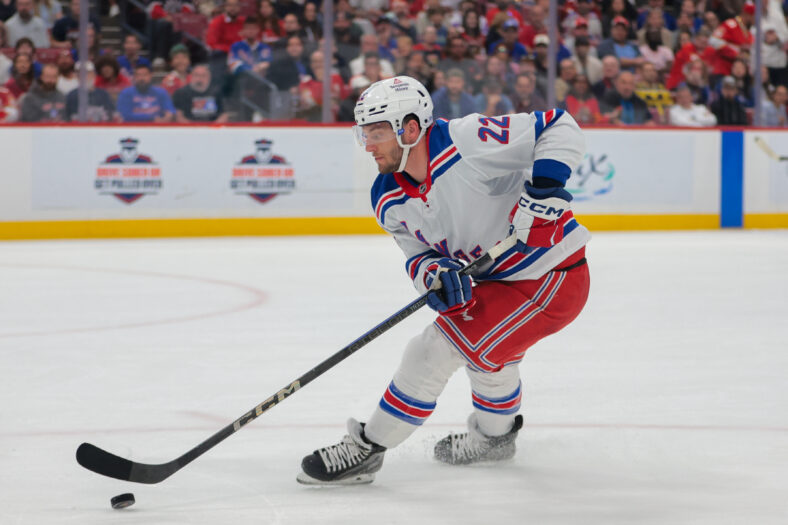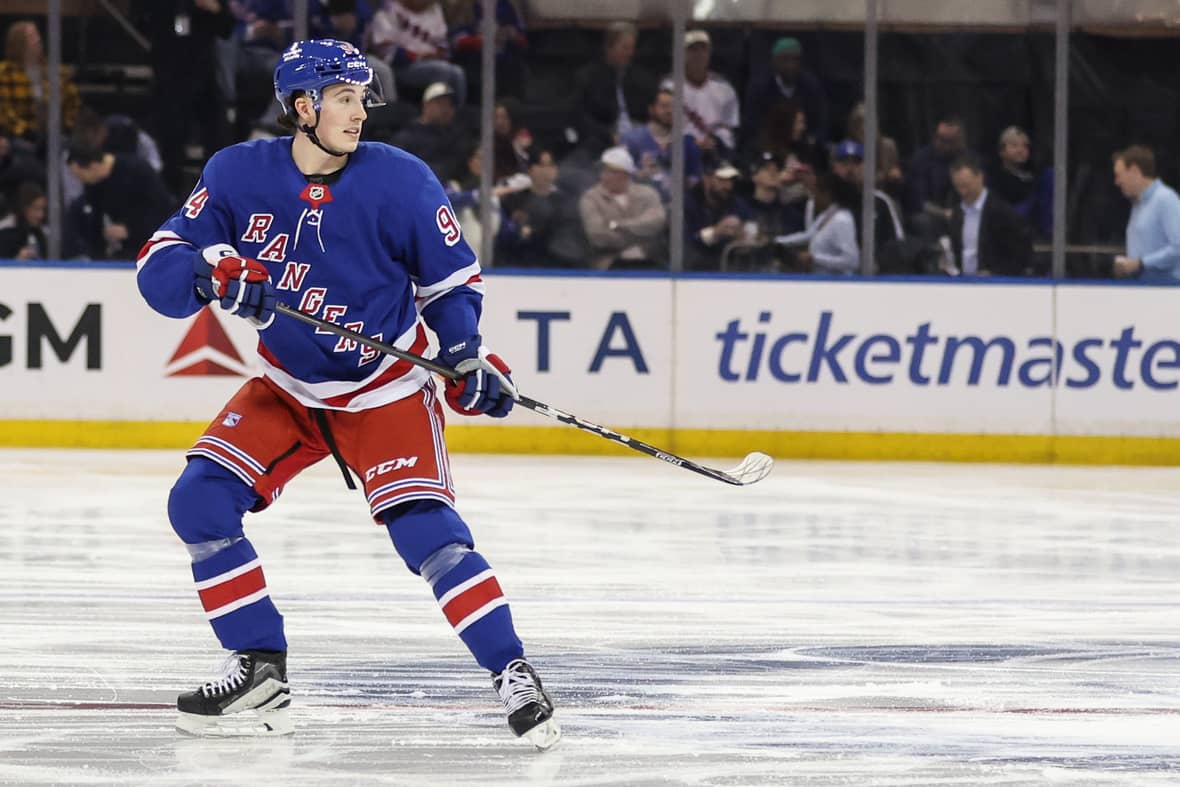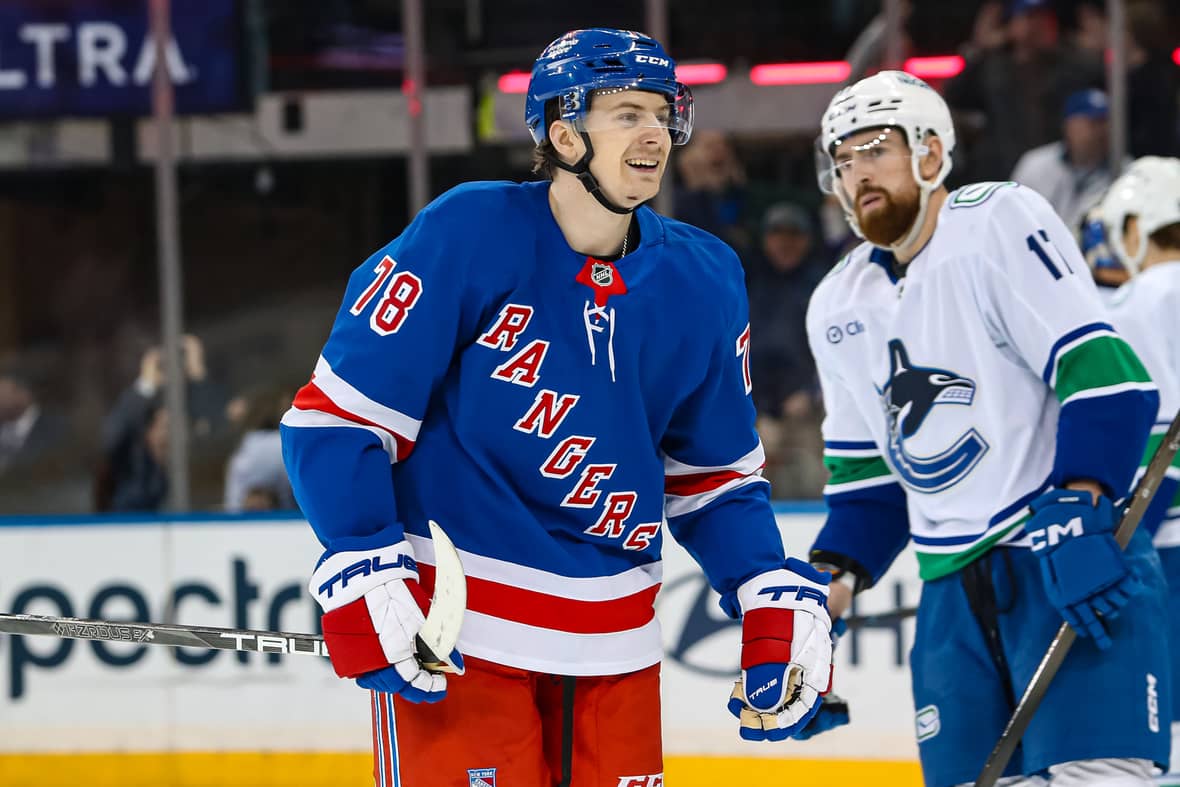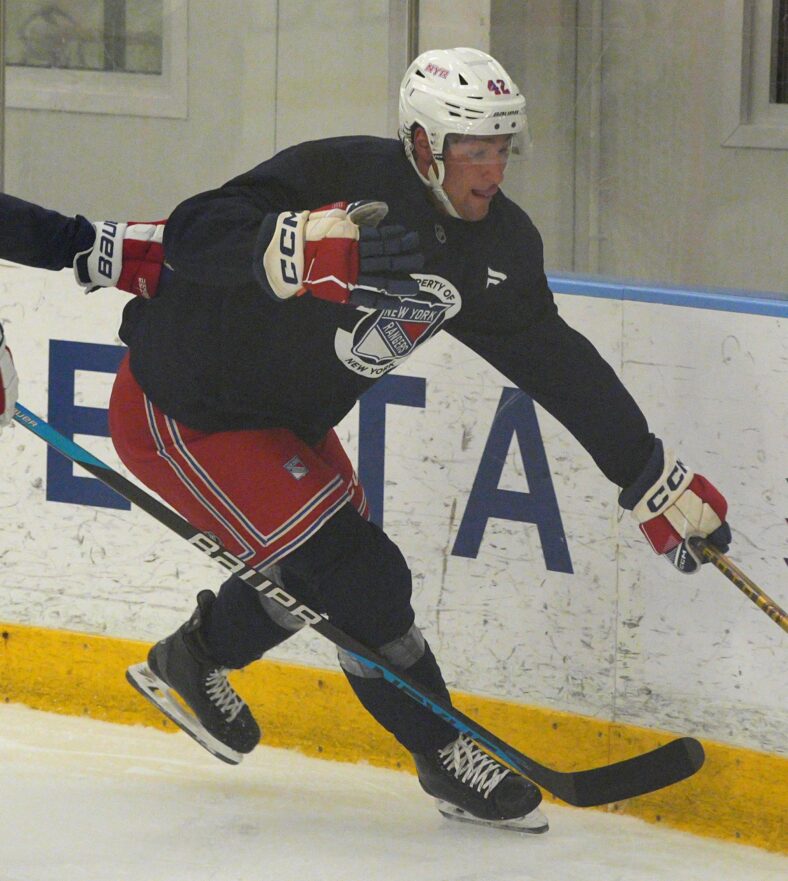Are the Rangers’ offseason moves over, or is the real work just beginning?
From the moment general manager Chris Drury fired coach Peter Laviolette in late April and brought in-two time Stanley Cup champion Mike Sullivan on May 2, it was clear the New York Rangers were looking to retool. They came out swinging on July 1 with a flurry of moves that reshaped the blue line and added depth up front. That came not long after a trade with the Anaheim Ducks marked the end of the Chris Kreider era in New York.
We’re just a few weeks removed from the opening of training camp, and by all indications the Rangers have done the bulk of their offseason work. But will that be enough as they work to return to the Stanley Cup Playoffs after one of the most disappointing seasons in franchise history?
Much of the roster is set, and most of the top two forward lines will return intact. The goaltending tandem of Igor Shesterkin and Jonathan Quick is solid, and the defense corps will have a new look with free-agent signee Vladislav Gavrikov likely being paired with Adam Fox on the No. 1 pairing. Younger forwards who have established themselves in the organization, including Will Cuylle and Alexis Lafreniere, are expected to assume larger roles, and the bottom six has been rounded out with returning depth pieces and low-cost acquisitions.
But even with the main boxes checked, there’s still reason to believe the job might not be finished. The last two defensive pairs and the third-line center situation remain unsolved, and relying too heavily on young players is always a risk. If the Rangers truly believe they’re ready to contend, standing still might not be the safest move.
Cap space and flexibility

While the Rangers currently have less than $800,000 in cap space, according to Puckpedia, they’re projected to have over $3.5 million in usable cap space by the trade deadline — thanks to the way the NHL’s salary cap accrues over time.
In short, NHL teams don’t get charged a player’s full salary all at once. Instead, cap hits are applied on a daily basis throughout the season. That means if a team waits until March to acquire a player, they’re only on the hook for a fraction of that player’s salary.
This is important because it gives Drury some built-in flexibility. Even if the Rangers can’t afford a move right now, the door is still open to add a key player at midseason or at the NHL Trade Deadline on March 6.
Two-way contracts/waivers

Another small advantage lies in the two-way contracts the Rangers handed out this summer. Players like Brendan Brisson, Justin Dowling, and Trey-Fix Wolansky are all signed to deals that allow the Rangers to move between the NHL and AHL without waivers.
Because these players can be sent to Hartford of the American League without their full cap hits counting against the NHL roster, it gives Drury extra flexibility. If a low-cost veteran doesn’t crack the opening night lineup, his contract can be buried in the minors, freeing up to $1.15 million in cap space per player.
It may not seem like much — but in a tight cap situation, small moves like that can add up fast.
One more move?

With all that being said, the idea of one more acquisition can’t be completely ignored.
The roster is far from flawless. A veteran on a league-minimum deal or a PTO could offer enough insurance to keep things stable through the 82-game season.
There’s also the uncertainty at third-line center. The Rangers will most likely turn to somebody like Juuso Parssinen or Jonny Brodzinski to fill the slot, but in a recent Forever Blueshirts fan poll, the majority of voters actually favored Vincent Trocheck sliding into that role.
While an internal solution feels all but certain, you never know. If the right player becomes available, another move is something to at least consider.
Related: Vincent Trocheck viewed as most likely to slot in at 3C on Rangers roster: poll
Development, not deals


Realistically, the Rangers’ most impactful additions could come from within. With several roster spots up for grabs, training camp is shaping up to the be the real test.
Forward Brennan Othmann enters camp with a legitimate shot to make the team. He had 49 points in 67 games for Hartford last season, then scored two goals during a brief stint with the Rangers. The 21-year-old looks ready for a bigger role, and he could slot in on the wing depending on how the lineup shakes out. Gabe Perreault is another name to watch. After racking up 108 points during two seasons with BC, and 20 points (six goals, 14 assists) in 14 games while helping Team USA in back-to-back gold medals at the World Junior Championship, he’ll try to force his way into the mix.
The Rangers are hoping that Scott Morrow, a defenseman acquired in the trade that sent defenseman K’Andre Miller to the Carolina Hurricanes three weeks ago, will be ready for a regular role on defense. He was a dominant offensive force at UMass, tallying 28 goals and 94 points in 109 games during three seasons — the second-most ever by a defenseman in program history. Morrow turned pro with the Hurricanes in April 2024, then had 13 goals and 39 points in 52 AHL games in his first full pro season before playing 14 games with Carolina, scoring his first NHL goal and adding five assists. Morrow’s skillset and experience could make him a prime candidate to fill a third-pair role come October.
Emerging talent

Dylan Roobroeck, who stands at a towering 6-foot-7, followed up a 72-point OHL season with a solid AHL debut: 34 points in 72 games. While he may need more time, his size is impossible to ignore. So is the progression of center Noah Laba. He had 26 points in 29 games at Colorado College before turning pro and putting up five points in an 11-game stint with Hartford. His development could land him on the Rangers’ radar sooner than expected.
Carey Terrance, acquired from Anaheim in the Kreider trade, tallied 39 points in 45 OHL games last season for the Erie Otters. He could get an NHL callup if he has a good showing at Hartford, where he’s likely to spend this season. And while defensemen EJ Emery and Drew Fortescue are going back to college, their presence at camp still matters. Fortescue posted 11 points and a plus-28 rating as a freshman at Boston College, while Emery brought a defensive-first mindset to North Dakota’s blue line.
If anything, that’s where the spotlight should shift now. Instead of scoping the open market, focus on developing young talent already in the system — something this organization hasn’t bee exactly known for over the years.
The Rangers may not have the money to chase a big name right now, but that doesn’t mean their offseason work is finished. In many ways, it’s just beginning. The one move that could define their season isn’t a headline-grabbing name, it’s finding out which of these young players are ready to step in and make an impact.
